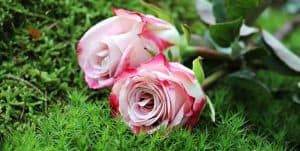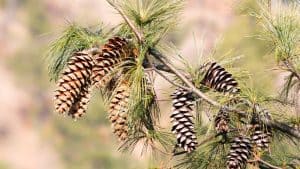You are a plant lover, and you love growing plants having leaves, branches, stems, and flowers, then you will love to grow vascular plants in your yard.
What is a Vascular plant?
Background
Vascular plants are tube plants, also known as Trachephytes. The scientific names of vascular plants are Tracheophyta and Tracheobionta.
The vascular plants have vascular tissues that distribute resources through the plant. The vascular tissues are xylem and phloem, and the combination of one xylem and one phloem adjacent to each other is called a vascular bundle.
One defining characteristic of the vascular plant is root, stem, and leaves. The vascular plants are covered with a cuticle or waxy layer that holds in water.
The leaves of vascular plants have stomata, a pore that helps to take in and outgasses such as oxygen and carbon dioxide. The roots take nutrients from the soil.
The stems move them up to the plant’s leaves, and the leaves capture sunlight for photosynthesis process. The vascular system has two distinct organ systems, namely a root system and a shoot system.
Scientific classification of Vascular plants
Kingdom: Plantae
Clade: Embryophytes
Clade: Polysporangiophytes
Clade: Tracheophytes
Types of Vascular plants
The vascular plants have a membrane-bound nucleus, so they are called eukaryotes. Some of the tracheophytes reproduce from seed while some reproduce from spores. There are two types of vascular plants: cryptogams and phanerogams.
Cryptogams
The scientific name of cryptogams is Cryptogamae, and this type of vascular plant reproduces by spore. The well-known groups of cryptogamae include both photosynthetic and non-photosynthetic. The photosynthetic cryptogams are algae, mosses, lichens, and ferns, whereas non-photosynthetic cryptogams are fungi, bacteria, and slime molds.

Phanerogams
The scientific name of phanerogams is phanerogamae. This type of vascular plant reproduces from the seeds, hence also named as seed plants. Phanerogamae is a terrestrial plant and is more advanced than cryptogams. They are flowering plants, and they produce their food by photosynthesis process. Phanerogams are classified as Angiosperm and gymnosperm.
Angiosperms
Angiosperms are covered seed plants, and they are flowering plants producing flowers and fruits. They have stem, roots, and leaves. The seeds of Angiosperm are available in the flower where the flowers have male reproductive organs called stamen or female reproductive organs called a pistil.
Angiosperms undergo a pollination process. The angiosperms are further subdivided into Dicots and Monocots. Some common examples of Angiosperm are rose, lily, mints, maize, cactus, peonies, etc.

Gymnosperms
Gymnosperms are a naked seed plant. They are non-flowering plants producing cones and seeds only, i.e., they do not produce flowers or fruits. Some of the common examples of gymnosperms are pines, firs, and spruces.
The gymnosperms have a sporophyte-dominant life cycle. There are more than thousand species that falls under one of four central division of the gymnosperm: Coniferophyta, Ginkgophyta, Cycadophyta, and Gnetophyta.
What are 3 Examples of vascular plants?
Ferns plants:
The ferns are small, but they cover large areas of land in the tropics and subtropics. The ferns also seem to change their shapes depending on what they are in need of; sometimes it will be thin, but when it is drought season, the fern will turn into a thicker frond.
Of course they will be faster in responding to weather changes like this because they are smaller than other plants. The ferns also play an important role in the soil because they help aerate it.
Gymnosperms:
These are also known as the conifers, cycads, and ginkgoes. The gymnosperms produce their seeds on cones. The cones play an important role in reproduction because they produce pollen which is needed for the fertilization of the flower.
The gymnosperms provide support to climbers like vines, they also provide food to herbivores with their needles and their bark which is made up of cellulose.
Flowering Plants:
The flowering plants are huge organisms that can cover large areas of land. They are also extremely diverse, so many types of them are found throughout the world.
The flowering plants produce flowers for pollination and seed dispersal, but also they give off oxygen, which is why they are vital for the air we breathe.
The most important trait of all three of these groups is that they play an essential role in our ecosystem, their changes shape our landscape and impacts our ecosystem greatly.

Characteristics of a Vascular plant
The vascular plants can survive a broader range of environmental conditions as they have a transport system. Having a transport system helps to develop a better method of asexual reproduction.
They have specialized tissues for transporting resources such as food and water to different parts of the plant. The vascular plant has a root system, shoot system, and vascular system.
The characteristics of a vascular system are described below:
Roots
Roots are the unaffected tissues derived from the stem of the plant. The root is the part of the plant that grows down into the ground to get resources such as food and water. It also holds and anchors the plant firmly in the earth. The vascular plants have real roots. Roots are diverse and are adapted to the soil composition and moisture content.
Xylem
The vascular plants have tissues called xylem. The xylem transports food and water to the tissues called phloem. The xylem tissue is rigid, and it can be preserved in the fossil record. They are found throughout the plant, roots, stem, and leaves.
Phloem
Phloem is the part of the vascular system that transports resources such as food and water to the plant. They bring minerals to the plants through the root. Phloem is made of several cell types like sieve elements, parenchyma, sclerenchyma, and companion cells.
Leaves
There are two different varieties of leaves for vascular plants: microphylls and megaphylls. Microphyll has a single unbranched leaf vein, and it does not have a complex network of veins.
The microphlls are assumed to be evolved from the modification of a single stem. The megaphylls have multiple leaf veins within the leaf. The megaphylls are considered to be developed from the groups of branched stems that are fused. The vascular plants have real leaves.
Growth
In the first stage of embryonic development, the zygote undergoes cell division to form an embryo. The embryo develops to build a plant body after making up organs and tissues. The primary growth occurs at the tips of root and stem of the plant, and the secondary growth thickens the root and stems.
Structure of Vascular plant
The vascular plants are developed from primary growth, i.e., the plants reproduce from cell division. They have specialized tissues for conducting water throughout the plant. Three major tissue of Vascular plants are described below:
The vascular tissue system
The vascular tissue system is comprised of xylem and phloem. The xylem transports food and water to the tissues called phloem, and the phloem transports resources such as food and water to the plant. The xylem conducts water and dissolves minerals, and the phloem conducts carbohydrates and primarily sucrose for the plant to use as food.
The ground tissue system
The ground tissue system consists of round or cubic cells with living protoplasm and thin walls. It includes all the tissues that are neither vascular nor dermal. The ground tissue system helps in storage, secretion, and photosynthesis process, and the ground tissue system is heterogeneous.
There is an internal and external ground tissue system, also called intrastellar and extrastellar, respectively. The ground tissue consists of Parenchyma, Collenchyma, and Sclerenchyma.
The dermal tissue system
The dermal tissue system forms the outer protective covering for the young parts of the plants, also known as the epidermis. This tissue includes leaves, roots, stems, flowers, fruits, and seeds.
It controls the interactions with the plant’s surroundings. It also protects the soft tissues of plants. Those plant parts which become woody do not have dermal tissue.
The epidermis is so thin that it is only one cell layer thick. They have their series of specialized cells to perform their respective functions like regulation of gas exchange, protection against water loss, absorption of water, etc.
What are the Differences between Vascular and
Nonvascular plants are dependent on the nutrients they receive from the ground. Most of these plants die in one growing season, but there are some that can live for up to 50 years.
Nonvascular plants provide food and shelter for many animals within their growth cycle. Vascular plants are independent of the ground they live on, they still need nutrients, however, they get them through their leaves.
Vascular plants also have stems that contain fluid called xylem and phloem which allows nutrients to travel through the plant.
Sources:
https://www.biologyonline.com/dictionary/vascular-plants
https://en.wikipedia.org/wiki/Vascular_plant

Amelia is a plant and nature lover! Ever since she was little, she loved spending time in her family’s garden and learning about how to care for each plant individually. As an adult, she has dedicated herself to sharing what she has learned and continuing to expand her knowledge on the plant kingdom.
